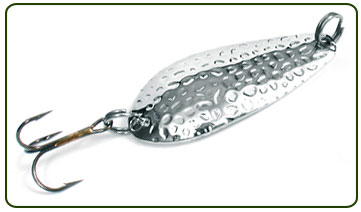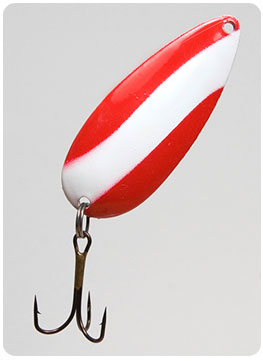
With a history dating back to the mid-1800s, the fishing spoon has stood the test of time and been proven over and over as a simple yet effective fish-catching tool for a range of species from small to large.
Whether you’re trying to imitate a school of smelt in deep water while targeting salmon, jigging vertically for smallmouth bass or fishing around wood and weeds for largemouth bass or pike, a properly selected spoon can often make for a very fun and productive day on the water.
-
Suggested Seasonal Use: Year-round, open water
-
Species: All species – While they’re most commonly used to target larger fish such as trout, salmon, bass and pike, smaller-sized spoons can also be effective for various panfish species, as well as yellow perch.
-
Types: Spoons, which imitate a wounded or fleeing baitfish, come in a variety of sizes, colors, finishes, shapes, materials and weights. They’re also designed with different hook setups, from single wire hooks to one, two or even three different multi-point treble hooks.

-
How to Use: Casting and trolling spoons are known for their wobble and flutter while being retrieved through the water columns at moderate angles, while jigging spoons are designed to be fished vertically over deep structure or schools of fish by jigging the bait straight up and down with short jerks of the rod tip. All three of these types of spoons typically feature single or multiple treble hooks and should be connected to an angler’s fishing line by either a split ring or snap.
Weedless spoons are designed to be fished in and around the thickest aquatic habitat such as submerged and emergent vegetation and wood. They typically feature a single, medium to heavy wire hook, and a wire hook guard to keep the bait from hanging up on cover. Weedless spoons can be retrieved through the cover under the surface, or reeled across the top of the surface and over the cover.
